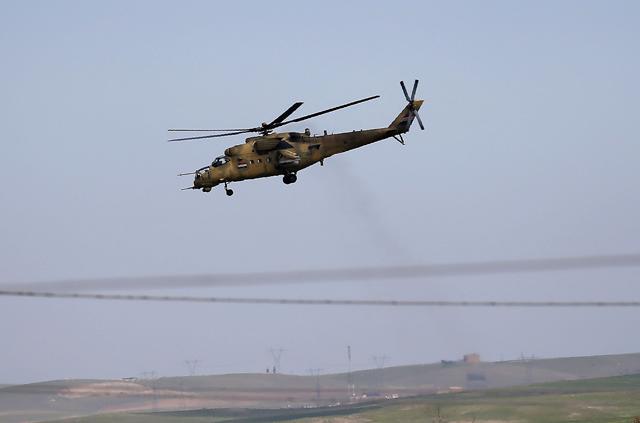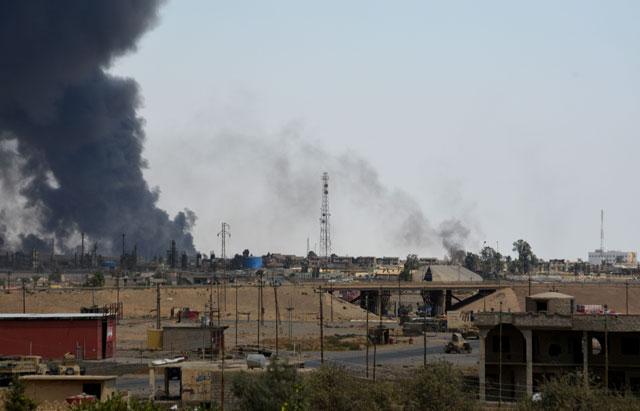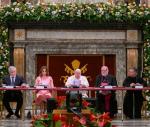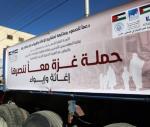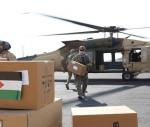You are here
Overshadowed by coalition, Iraqi aviation takes on Daesh
By AFP - Nov 26,2016 - Last updated at Nov 26,2016
QAYYARAH Base, Iraq — Iraqi army pilot Hossam Jassim banked his helicopter sharply to the left as a Russian-made Mi-35 gunship flying alongside unleashed a missile at a suspected Daesh terror group target.
An explosion flashed in the desert village below and a huge plume of sand and dust rose into the sky. Jassim gave a thumbs up.
“It was a pickup truck with a heavy machine gun,” he said later as he emerged from the cockpit at Qayyarah Base, around 50 kilometres south of jihadist bastion Mosul.
“There were about 10 fighters,” he said.
Down on the ground Iraqi forces are battling to wrest back Mosul, tightening the noose in the surrounding desert and grinding their way street-by-street through residential neighbourhoods.
Meanwhile, in the skies above there is a wide array of hardware backing them up.
Dominating attention have been the jets, drones and helicopters from the US-led coalition of foreign countries that has been pounding Daesh with its awesome firepower.
But, in its shadow, Iraq’s fledgling aviation has also been playing its own part — carrying out strikes with far more limited resources to back up its troops.
Army pilot Golan Salim looked out at the roughly dozen helicopters — a mixture of Russian Mi-28 and Mi-35, American Bell armed reconnaissance choppers and European EC635s — resting on the tarmac at the Qayyarah Air Base.
That morning he said he had flown a mission to take out a group of Daesh militants with rocket-propelled grenades.
“We finished all these targets,” he said. “We have broken them.”
Salim said that the previous day he had to take evasive action as he faced machine gun fire from the ground.
Despite increasing efforts to weaponise drones, the extremists are far from threatening the air dominance of their opponents. But they have put up other obstacles.
Billowing in the middle distance are giant black clouds of smoke from oil fires that Daesh lit back in August to obfuscate their retreat as they were pushed from the area.
“It is very difficult. Once I could not take off,” said Salim. “It is very important to shut down the fire.”
Human shields
The large numbers of civilians that remain inside Mosul and the towns around still under Daesh controls have also placed major restraints on the air campaign.
The United Nations has said the extremists have forced tens of thousands of locals to march back with them as human shields.
Iraq’s air capabilities were wiped out during the US-led invasion of the country in 2003, and have been rebuilt from scratch since then with many of the pilots trained by America.
The pride of its air force is a batch of F-16 jets supplied by the US that have bombed Daesh targets around Mosul — but much of the air power lacks precision weapons.
During its campaign against Daesh, Iraq has previously been accused of using indiscriminate barrel bombs and the US-led coalition has also killed civilians.
But army aviation pilots insist that they are doing everything they can to avoid civilian casualties. In the five-week old Mosul offensive, their action so far has focused on sparsely populated desert areas outside the city.
“It puts limits on our operation,” Major Muthanna Hanun said.
In terms of the division of labour, the army aviation pilots said they can usually deal with most of the targets.
But for larger objectives or when there is a threat from the ground that requires bombing from greater distance they turn to the coalition.
“If we don’t have the capabilities to deal with it then the coalition is called to handle it,” Hanun said.
The army aviation is under army command and has lighter aircraft, while the air force is a distinct structure boasting greater firepower, including US-made F-16, Russian Sukhois and Czech Aero L-159 fighter jets.
According to defence ministry spokesman Tahsin Ibrahim, army aviation helicopters carry out 60 to 70 sorties a day across the Mosul battlefield.
For the forces on the ground, army aviation support is proving vital to counter the waves of suicide car bombs Daesh unleashes against their positions.
Federal police general Mohieddin Jawad sits in a cabin by the airfield that serves as a rudimentary coordination centre.
“Fifty per cent we rely on the army aviation and 50 per cent we rely on the troops on the ground,” Mohieddin said.
Related Articles
ERBIL, Iraq — The Daesh terror group shot down an Iraqi helicopter operating over Mosul on Thursday, as security forces announced they recap
QAYYARAH, Iraq — Iraqi forces on Thursday pushed the Daesh terror group from Qayyarah, a northern town considered strategic for any future o
MOSUL — Iraqi army helicopters strafed and rocketed the Daesh terror group positions inside Mosul's Old City on Sunday as ground troops foug


